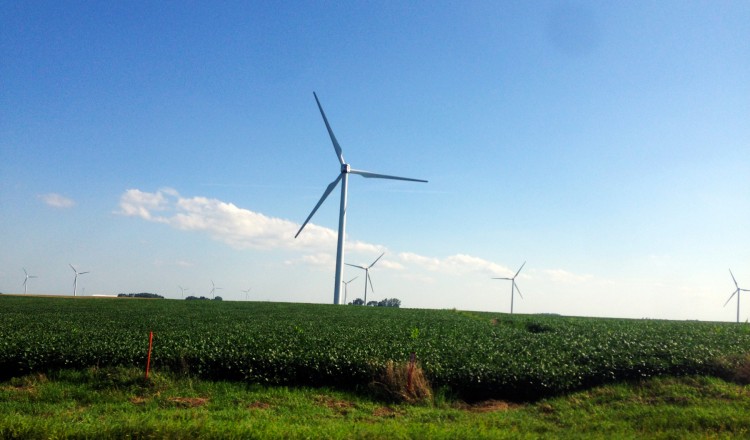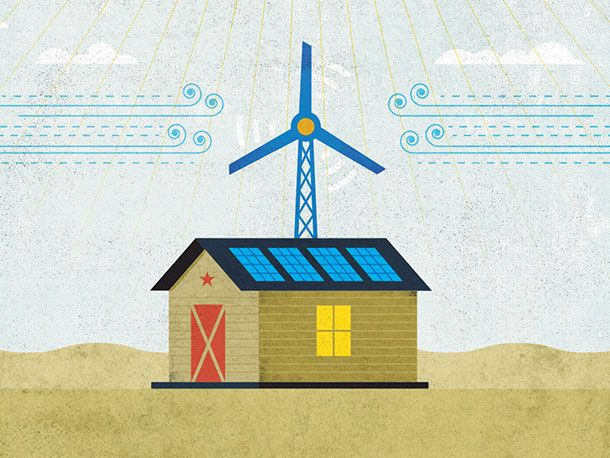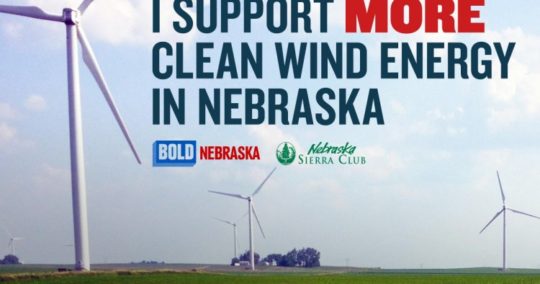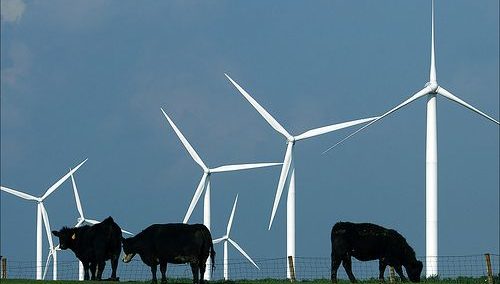

Last night, I attended the Lancaster County Planning Commission meeting where the proposed wind zoning ordinance was discussed in great detail.
The Commission narrowly passed the zoning ordinance on a 5-4 split, increasing the sound levels the turbines can run at and clarifying the setbacks for dwellings from an installed turbine. The split vote on the board is a good indication on where the community is also–everyone who spoke either for or against the ordinance made it clear they supported wind and clean energy. The devil, as they say, is always in the details.
Read LJS Nick Bergin article on the hearing
The next step for the wind ordinance is approval, denial or modification by the Lancaster County Board. A date for the public hearing at the County Board has not been published yet but we anticipate it happening in September.
Local concerns over sound levels, setbacks of turbines from homes and property lines and decommissioning of turbines after 20+ years were discussed in great detail. The landowners in the community spent a tremendous amount of their time researching and attending working group sessions and various meetings on the wind ordinance. Those hours represent our democracy at its best.
The Stop Hallam Wind landowners did not achieve everything they believe should be in the ordinance, but they moved the conversation to places it simply would have never gone without them all standing up together.
Landowners who support the wind ordinance, and the specific project proposed by Volkswind in Hallam, also made a tremendous impact last night. They stood their ground about the need to diversify the “crops” they are harvesting. They want to harvest wind. They see clean energy as a step in helping stop climate change (which was discussed at surprising numbers last night by citizens and elected officials). Landowners talked about wind giving them a better chance to stay on the farm. These landowners, along with those who wanted to see stricter local regulations, are standing up and giving voice to what they think is the best direction for their land now and in the future.
As you can imagine, the members of the Planning Commission and the staff who researched and wrote the ordinance, had a tremendous amount of factors to balance. On the one hand, their duty is to protect the health and safety of the community — and on the other hand, many, if not most, Commissioners see climate change as a public health risk. Balancing these two factors is their job, and the role of leaders who were also in the room — like Sen. Haar, and John Hansen with the Nebraska Farmers Union, who has led on wind since the 1970s.
The red flag I want to raise is for anyone who supports clean energy and wind is in regards to demonizing or making fun of the landowners who do not think the current siting of these turbines is in the right place.
As we fight the pipeline, we know how it feels to be made fun of, either by oil-front groups, or even elected officials. No one involved in fighting Keystone XL will ever forget the humiliating hearing at the State Capitol where Sen. McCoy, in particular, made fun of, ridiculed and belittled landowners and citizens who were testifying and bringing up valid concerns about water pollution and property rights. Many of us left the hearing room that night heart-sick and demoralized. Given years of perspective, we now know Sen. McCoy and front groups like Nebraskans for Jobs and Energy Independence were making fun of us because we were winning.
It is easy to say the sound level concerns are “in their heads” and not real. Its easy to say that if your family is not the one facing a project. So as we stand up for more clean energy and more wind, we also must continue to stand with landowners who want to see local control and their concerns addressed by their local elected officials.
At some point, our state PSC, Power Review Board, Oil and Gas Commission, first responders, State Senators and others will need to have a comprehensive look at how we are dealing with clean and fossil-fuel energy. We do not have a plan for the balanced development of our resources. We do not have a plan for all the safety and public health issues that come with energy projects. We do not have a clear eminent domain for private gain policy and we certainly do not have a fund that energy companies have to pay into for training of local first responders and doctors as well as all the restoration and clean up costs that come with energy infrastructure failures.
Right now Nebraska is a proud Ag state. However, Nebraska has a wide opportunity to also be a leading clean energy state. Whether it’s biofuels, solar, wind, methane capture, efficiency or ideas we have not even dreamed of yet. Nebraska has the potential and the grit to build our own energy. Farmers, ranchers and citizens already are taking their own steps to create locally-based clean energy. Many Bold supporters helped fund the Build Our Energy Barn directly in the path of Keystone XL. Art Tanderup, host of Harvest the Hope, went solar and now the Hammond family who owns the land the Energy Barn is located on is going solar too. What is happening in Holt County right now with the Buffett wind farm is nothing short of remarkable. Fred Kanpp just did a great piece on the local impacts of a town that in many accounts stopped Keystone XL in its tracks (and yes some local concerns on the project).
Here is a solid question for all of us: Will we elect politicians ready to take on the diversified energy challenge, or will we keep electing politicians like Gov. Ricketts and Att. Gen. Peterson who are moving our state backwards by opposing clean energy every chance they can while at the same time they lift up carbon-intensive projects, like Keystone XL and water-polluting actions like fracking waste injection wells?
We have a choice in our elected officials and our energy. It should be balanced. We should not be 70% reliant on coal from Wyoming. Nor should we say that our state should be 70% wind or any other energy source. If as a state we are locked into any one energy source with that huge of a margin, it means we are at the mercy of that energy source and not in control of our state’s energy dollars.
As I sat in the hearing last night, I kept wishing and hoping that just as much attention, detail and study on the sound and setback issues and impacts of wind was also applied to tarsands pipelines, fracking wells and other fossil fuel projects in our state. That is what Bold Nebraska is committed to — a transparent process where citizens and elected officials lead together to ensure property rights, our land and our water is protected above all else.




